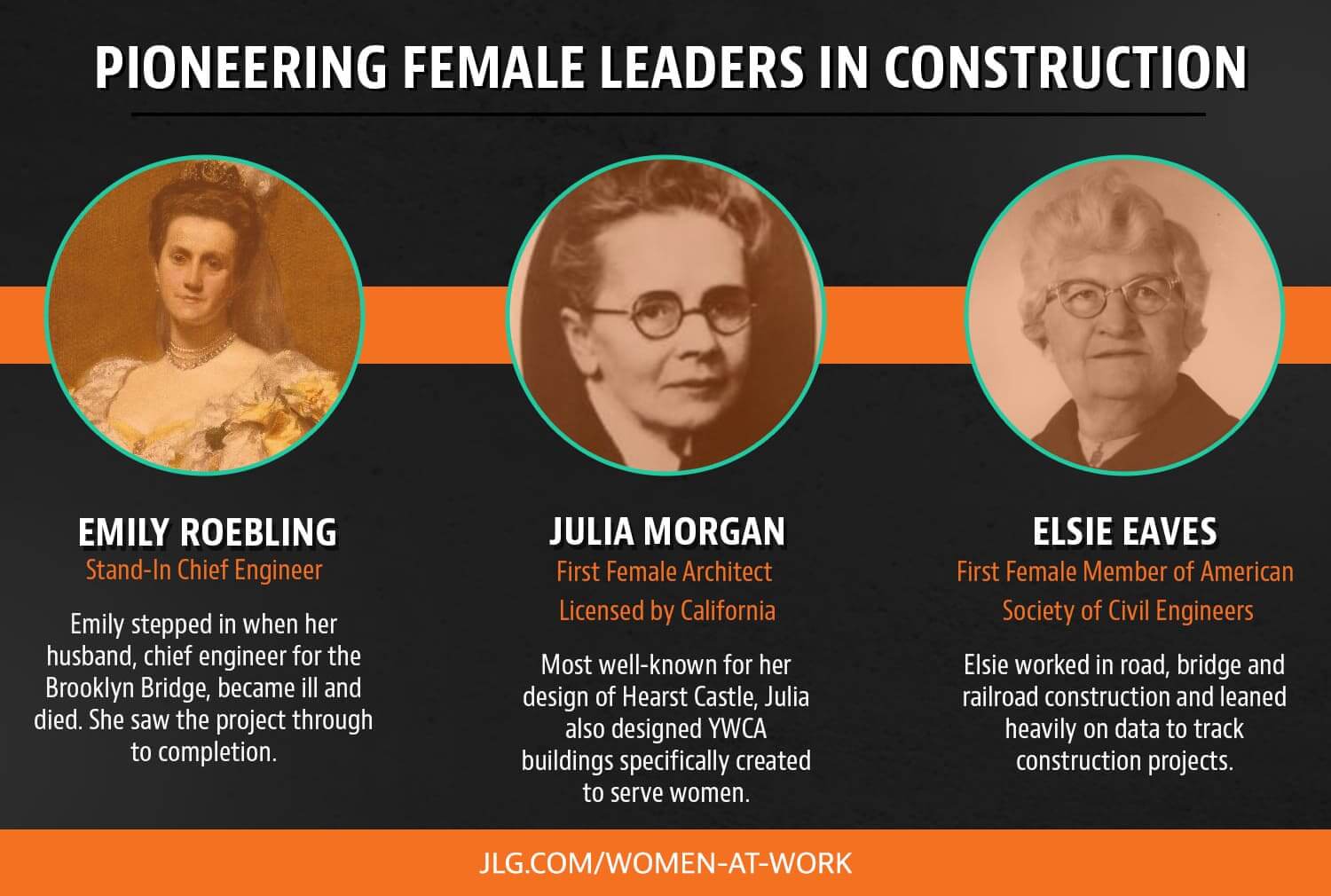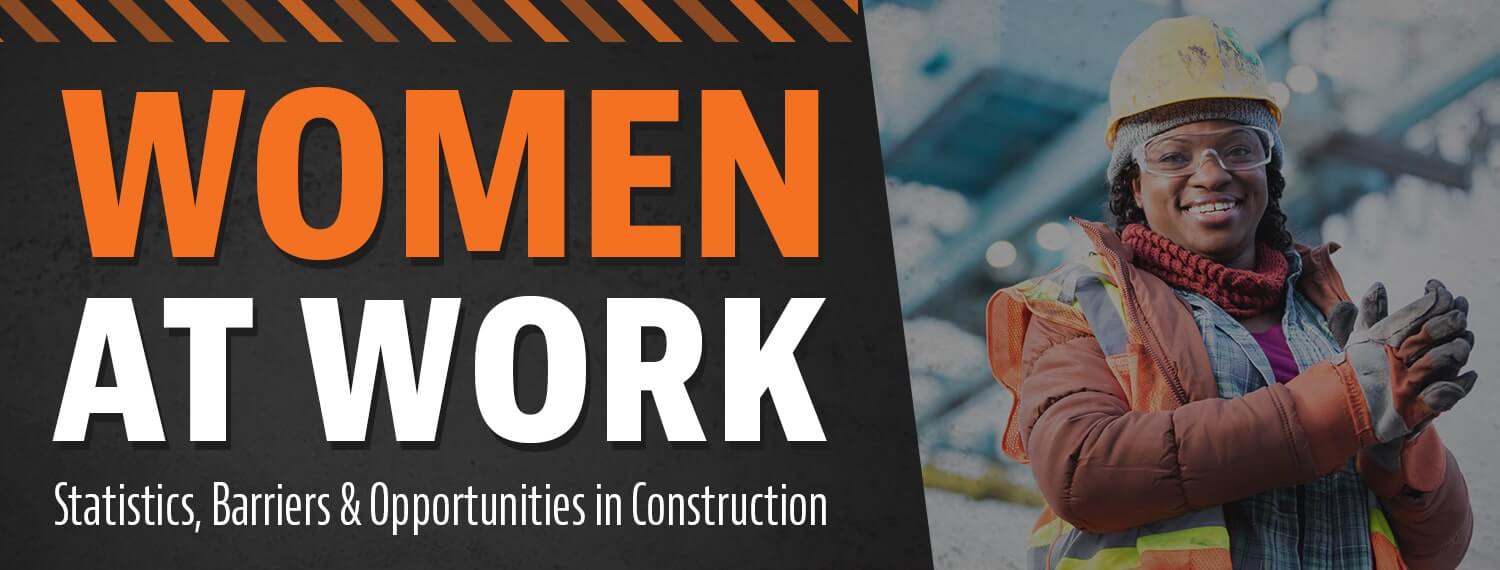The recent rise of women in construction holds promise for an industry in need of workers, but there are still barriers that exist for women who choose construction as a career path. While some of these barriers will require continued effort on the part of employers to resolve, others have started to fade as more and more women choose this career path.
- Unconscious Bias: Some attitudes and beliefs are so ingrained in our culture that people’s decisions are influenced by them without their knowledge. For example, a female employee may be left out of social events without being given the opportunity to make her own decision about her participation.
- Gender Discrimination: Discrimination is the conscious decision to refuse women the same opportunities or privileges that would be afforded to men in the same position.
- Higher Risk of Injuries: Because most of the construction workforce is male, safety equipment that is designed based on female anthropometric (body measurement) data isn’t always made available.
- Lack of Female Mentors: When women first entered this sector of the workforce, much of their training was given by men who weren’t keen on helping a woman advance within the industry. Today, there is still room for improvement, but overall there are many more empowering initiatives and resources for women in construction.
- Pay Gap: Though there is less of a gender pay gap in the construction industry when compared to other industries, a discrepancy still exists. To overcome this barrier, employers must continue to commit to diversity initiatives that will create a fair and balanced workplace.

Past & Present: Spotlight on Female Leaders in Construction
Thanks to the valuable contributions of many famous and not-so-famous females, more women than ever have set their sights on the construction industry as their long-term career path. These women are just a few examples of female leaders who have had a positive influence within the industry.

Historical Women
| |
Emily Roebling |
Julia Morgan |
Elsie Eaves |
| Her Position |
Stand-In Chief Engineer
|
First Female Architect Licensed by California
|
First Female Member of American Society of Civil Engineers
|
| Her Story |
She stepped in when her husband, chief engineer for the Brooklyn Bridge, became ill and died. She saw the project through to completion. |
Most well-known for her design of Hearst Castle, she also designed YWCA buildings specifically created to serve women. |
She worked in road, bridge and railroad construction and leaned heavily on data to track construction projects. |
Modern Women
| |
Elizabeth Diller |
Roni Savage |
Sheryl Palmer |
| Her Position |
Architect & Founding Partner of Diller Scofidio + Renfro
|
Environmental Engineer and Managing Director of Jomas Associates
|
Chairman and CEO of national builder Taylor Morrison
|
| One Thing to Know |
She’s the mind behind The High Line in NYC. |
She founded her own company in 2009. |
Her career path changed multiple times on her way to success. |
| Recognition |
Named to the 2018 Time 100 List |
Black British Businessperson of the Year, Best Business Women in STEM Award, Precious Awards Entrepreneur of the Year |
Company named America’s Most Trusted Home Builder for third consecutive year in 2018 |
How Construction Companies Can Continue to Recruit & Retain Professional Women
The construction and trades industries represent an opportunity for women to work in secure, well-paying positions that require far less training and less debt than other occupations. Here are several ways construction companies can continue to recruit and retain women.
- Train all employees on the signs of unconscious bias and set clear expectations for how everyone at the organization should be treated.
- Highlight all accomplishments in equal measure, focusing on the strengths of individual employees without allowing gender to enter the conversation.
- Brainstorm ways to involve young girls in your organization to show them that construction and engineering are viable career paths.
- Foster good working relationships and a sense of inclusion between women and their male counterparts.
- Continue focusing on diversity initiatives and issues that appeal directly to female employees—like paid maternity leave—to recruit and retain more women across the industry.
- Adopt a zero-tolerance policy on workplace discrimination, sexism and bullying.
- Use a merit-based, results-oriented structure to award promotions and pay raises.
- Stock safety equipment and uniforms in both male and female cuts and sizes.
Conferences & Initiatives
Women in Construction Week
Held annually in March, Women in Construction Week highlights the growing role of women in construction and raises awareness of the opportunities available to them in the industry.
Groundbreaking Women in Construction (GWIC)
An annual conference that caters to women in architecture, engineering, consulting, contracting and related businesses.
Women in Construction Conference (WIC)
A leadership and networking conference in Washington, D.C., that covers topics from negotiation and career growth to quality control on the job.
Women in Construction USA
An event that attracts 1,000+ attendees annually and is focused on empowering women in construction-related fields.
General Associations
Professional Women in Construction (PWC)
An organization whose goal is to “support, advance and connect women and promote diversity within the architecture, engineering, construction (AEC) and related industries.”
National Association of Women in Construction (NAWIC)
An association that helps women within the construction industry with professional development, networking, leadership and education.
Women Construction Owners & Executives (WCOE)
A network of executive women in the construction industry that promotes mentorship and advocates for issues important to women in the industry.
Job-Specific Associations
Women in Skilled Trades (WIST)
An organization that develops programs and events to inform women about career opportunities in the construction skilled trades.
Women in Construction Operations (WiOPS)
A group focused on facilitating mentorship opportunities between women in operations, managerial, estimating, engineering and design professions.
Women in National Electrical Contractors Association (WIN)
A collaborative forum designed to help advance the careers of women who work in the electrical contracting industry.
Women in HVACR
An association that helps women grow their careers in the HVACR industry through networking, mentoring and education.

Want to stay up to date with industry news and trends similar to this? Make sure you subscribe below to receive monthly updates from Direct Access with newly posted content, so you never miss important information.